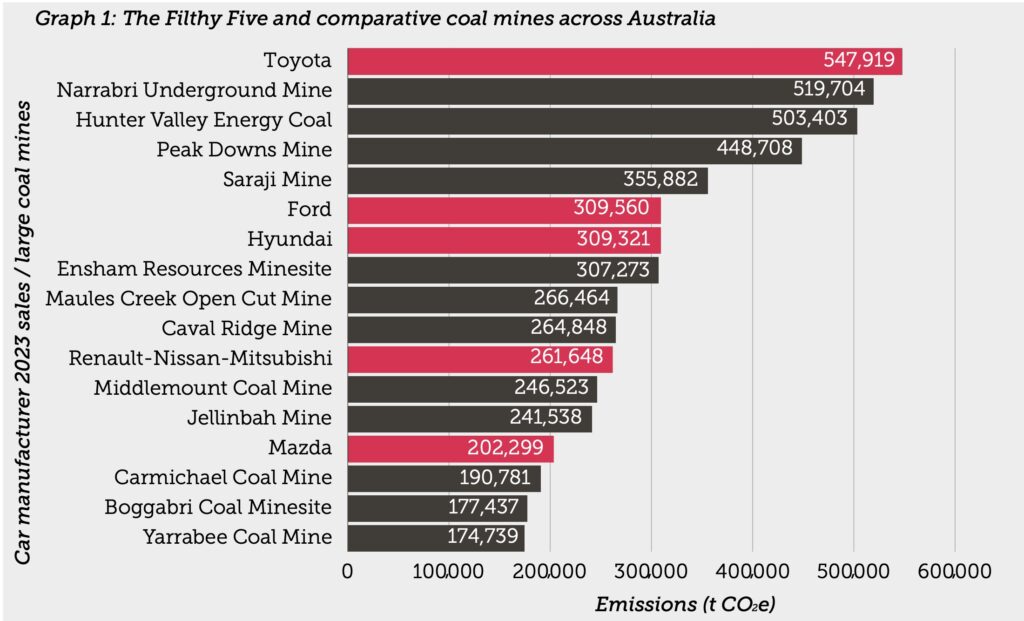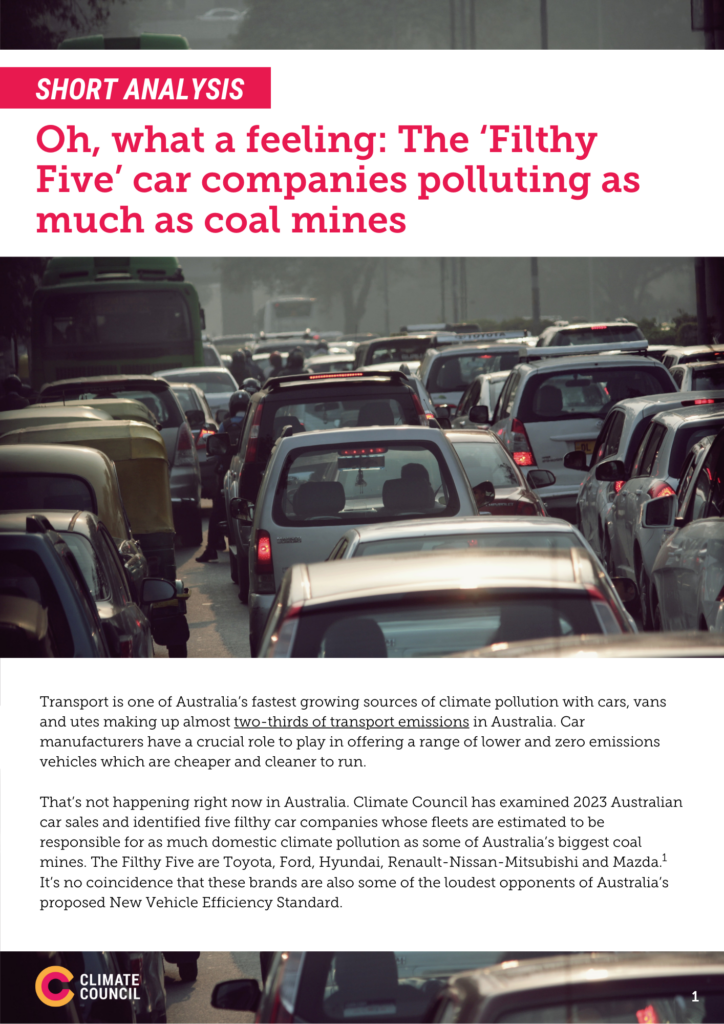May 17 2024 update:
Australia’s New Vehicle Efficiency Standard passed Federal Parliament on 16 May 2024, and will commence on 1 January 2025. This is a huge win for our climate, our health and our hip pockets, and something the Climate Council campaigned hard for.
Transport is one of Australia’s fastest growing sources of climate pollution with cars, vans and utes making up almost two-thirds of transport emissions in Australia. Car manufacturers have a crucial role to play in offering a range of lower and zero emissions vehicles which are cheaper and cleaner to run.
That’s not happening right now in Australia. Climate Council has examined 2023 Australian car sales and identified five filthy car companies whose fleets are estimated to be responsible for as much domestic climate pollution as some of Australia’s biggest coal mines. The Filthy Five are Toyota, Ford, Hyundai, Renault-Nissan-Mitsubishi and Mazda. It’s no coincidence that these brands are also some of the loudest opponents of Australia’s proposed New Vehicle Efficiency Standard.
The Filthy Five: up there with Australia’s coal mines fuelling climate change
Each of the Filthy Five ranks alongside some of Australia’s dirtiest coal mines in the amount of climate pollution their cars are estimated to produce in a year. Toyota leads the Filthy Five with its 2023 Australian sales estimated to account for up to 547,919 tonnes of carbon dioxide (t CO ) emissions – more than 46 big coal mines. Ford and Hyundai are runners up, with their 2023 Aussie sales estimated to be responsible for more climate pollution than 32 coal mines. Renault-Nissan Mitsubishi and Mazda close out the filthy five with estimated climate pollution greater than 26 dirty coal mines and 20 of these climate wrecking facilities, respectively.
Every year these companies are allowed to keep selling the same dirty and inefficient cars, their new fleets will keep pumping out this high level of pollution. Their cars also stay on the road year after year, cumulatively adding to our climate pollution burden over time.

Each of the Filthy Five’s emissions reflect the actual mix of cars, vans and utes the brand sold in Australia in 2023. The tailpipe emissions for each vehicle a given company sold were used to calculate emissions over the span of a year, using the average distance travelled. Tailpipe emissions differ by model variant and emissions are calculated as if the most emissions intensive variant was purchased (more detailed method and data below). Coal mine emissions are sourced from the Safeguard Facility Reported Emissions 2021-22, which covers facilities greater than 100,000 tonnes of CO2e (for Scope 1 emissions). The graph above includes a select few as examples.
Being in league with the most polluting fossil fuel – coal – is nothing to be proud of. The Australian Government has laws regulating pollution from coal mines, but at the moment the Filthy Five and other car manufacturers are getting off scot free for their climate-wrecking impacts.
An effective New Vehicle Efficiency Standard can make these car companies clean up their act, so that Australians get access to cleaner cars that are cheaper to run. The transport sector must pull its weight in tackling the climate crisis, starting with these high-polluting multinational brands.











